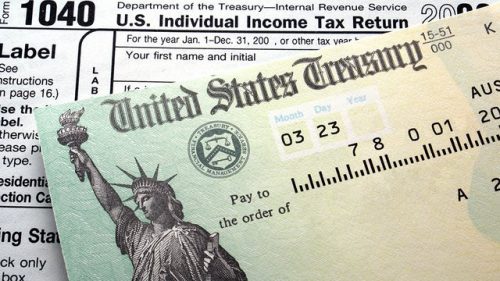
Understanding the tax implications of NEM successor policies
Depreciation benefits under a feed-in tariff can offset potential income tax liability.
The Hawaii Public Utilities Commission grabbed headlines with their decision to end the state’s net energy metering (NEM) program this October. While the Aloha State is the first to make this move, California is following suit with its NEM 2.0 proceeding underway.
As more states evolve beyond net metering, it is essential to consider the potential tax implications of successor policies.
For this reason,the Clean Coalition conducted an analysisto compare the tax impacts on a typical California residential customer-generator under a feed-in tariff (FIT) program as opposed to net metering. The Internal Revenue Service (IRS) has not ruled that energy sold to a utility under a FIT is taxable gross income. However, in this analysis, the Clean Coalition analyzed the implications for the customer-generator if the IRS were to determine that the revenue from energy sales under a FIT constitute taxable gross income.
The result of our analysis is that if energy sales under a FIT are subject to income tax, any tax liability will be offset by the value of applicable tax deductions at a FIT rate up to approximately $0.15/kWh.
Details of the analysis
Under net metering, excess energy is exported to the grid and the customer is credited at the retail rate for each kilowatt-hour (kWh) delivered. When a NEM system is not producing enough power to meet on-site load, the customer buys power from the electric utility at the retail rate. Under a FIT, a customer-generator sells all power produced to the local utility at a long-term, fixed-rate and continues to buy all their energy at the retail rate.
Through this analysis, we investigated the tax implications for a California customer-generator who switches to a residential FIT from a NEM program if the IRS were to determine that the FIT energy sales constitute taxable gross income. To do this, we modeled the following:
- Electricity consumption and PV generation for a typical California customer;
- Federal and state tax treatments;
- Rate structures for the customer, including the complete compression of California rates from four tiers to two tiers in 2019; and
- The scheduled expiration of the investment tax credit (ITC) at yearend 2016.
The analysis examined impacts on an average Pacific Gas & Electric (PG&E) residential customer located in San Jose, California. We used this location because Santa Clara County, home to the City of San Jose, boasts one of the highest numbersof solar PV and net-metered residential customers in the state–and the most in PG&E’s service territory. For this analysis, we assumed the customer-generator owned a 5 kilowatt (kW) solar PV system with an annual output of 7,500 kWh per year.
We factored in standard federal and California state tax liability, as well as the applicable ITC related to either the NEM or FIT program analyzed. Beginning in 2017,the ITC is scheduled to step down from its current 30% to 10% for commercial customers and expire entirely for residential customers. Under a FIT, the customer-generator may not be eligible for the residential investment tax credit (ITC); however, they would be eligible for the commercial ITC.
Results
If energy sales under a FIT are subject to income tax, any tax liability will be offset by the value of applicable tax deductions at a FIT rate up to approximately $0.15/kWh for the typical customer, as detailed below.
Table 1: Income & potential tax liability for 20 years relative to FIT rate

The extent to which depreciation of a DG system offsets taxes on energy sales depends on two key variables. First is the system costs eligible for deduction. If the costs of installing and maintaining the DG system are reduced, then the value of income deductions is lower and vice versa. The second key variable is the FIT rate. When a lower price is paid for energy, the amount of taxable income is reduced and vice versa.
In future years, declining costs of solar PV, changes in current incentives, and changes in applicable rate design will influence the results. We explored potential consequences of these changes by modeling two scenarios–2015 and 2019.
California is transitioning to a two-tier rate structure beginning in 2017, which will eventually result in a 25% differential between the tiers when fully implemented in 2019. In our 2019 scenario, we modeled this new rate structure using estimated values of $0.18/kWh and $0.23/kWh as the two tiers. For 2019, we assumed that installed PV system costs would decline to $2/W. We also factored in the scheduled expiration of the ITC.
When California’s two-tier rate structure is fully implemented in 2019, the resulting 8.2-year payback period under NEM is longer than the 7.9 years achieved under the $0.15/kWh FIT. Also, as reflected in the table below, a reduction in the ITC value may be offset by reductions in installed costs. In the 2019 scenarios, the FIT payback periods actually shorten due to modeling installed costs of $2/W. It is worth noting that NEM systems have a higher net present value (NPV) over the course of 20 years because the value of energy avoided increases under NEM as retail electricity rates rise over time, whereas FIT systems operate under a non-escalating rate.
Table 2: PV system payback periods under FIT and NEM (2015 and 2019 with rate change)

The National Renewable Energy Laboratory’s (NREL) System Advisory Model, which we utilized for this investigation, only allowed for analysis of NEM and buy-all/sell-all FIT systems. However, a middle ground exists and was recently implemented in Hawaii. Under this hybrid self-supply plus FIT approach, known in Hawaii as the “grid-supply” option, generation from a customer’s system is first used to satisfy simultaneous on-site load, enabling the customer to avoid purchasing energy at the retail rate from the utility. The customer captures the full value of avoided energy purchases, which may currently be higher than the FIT rate or may become higher over time. Any energy not consumed on-site at the time of generation is sold to the utility at an established FIT rate. The customer continues to buy energy from the utility at the retail rate to meet load not served by the DG system.
Under this hybrid self-supply plus FIT approach, the NPV and the payback period would be about halfway between the corresponding FIT and NEM systems. For the 2015 model runs, a self-supply plus FIT approach, where the customer sells 50% of energy produced, would yield a NPV of approximately $7,829 and a payback period of roughly 7.1 years.
Table 3: Hybrid Self-Supply Plus FIT – Comparative Tax, NPV and Payback

In practice, the results would tend toward the NEM example if daytime load coincided with generation, or toward the FIT example if on-site load did not coincide with generation. Solar panels installed in a more westerly orientation typically support greater matching of generation and load.
See the full analysisfor additional details.

